
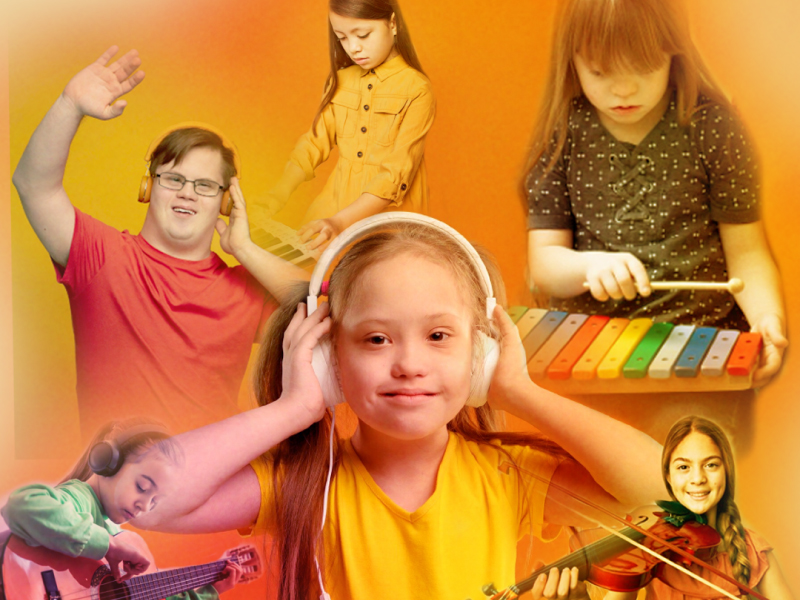
The Lifelab Kids Journal
Download a Newsletter
Welcome back
In July, we shared how art therapy gives children a safe space to express what words sometimes cannot. This month, we celebrate another language of the heart: MUSIC.
For many children, music is more than sound. Itís the spark that lights up their eyes, the rhythm that helps their bodies find calm, the melody that makes connection possible. A simple beat on a drum or the comfort of a favorite song can become the first bridge to communication, joy, and belonging.
At LifeLab Kids, music therapy is woven with care helping children build focus, balance emotions, and discover their voices.
And while music takes the spotlight this month, it is just one part of the circle of care we offer. From recreation therapy that nurtures movement and play, to occupational therapy that builds daily independence, every therapy works together so each child feels supported in every step of their journey.
Spotlight on Music Therapy
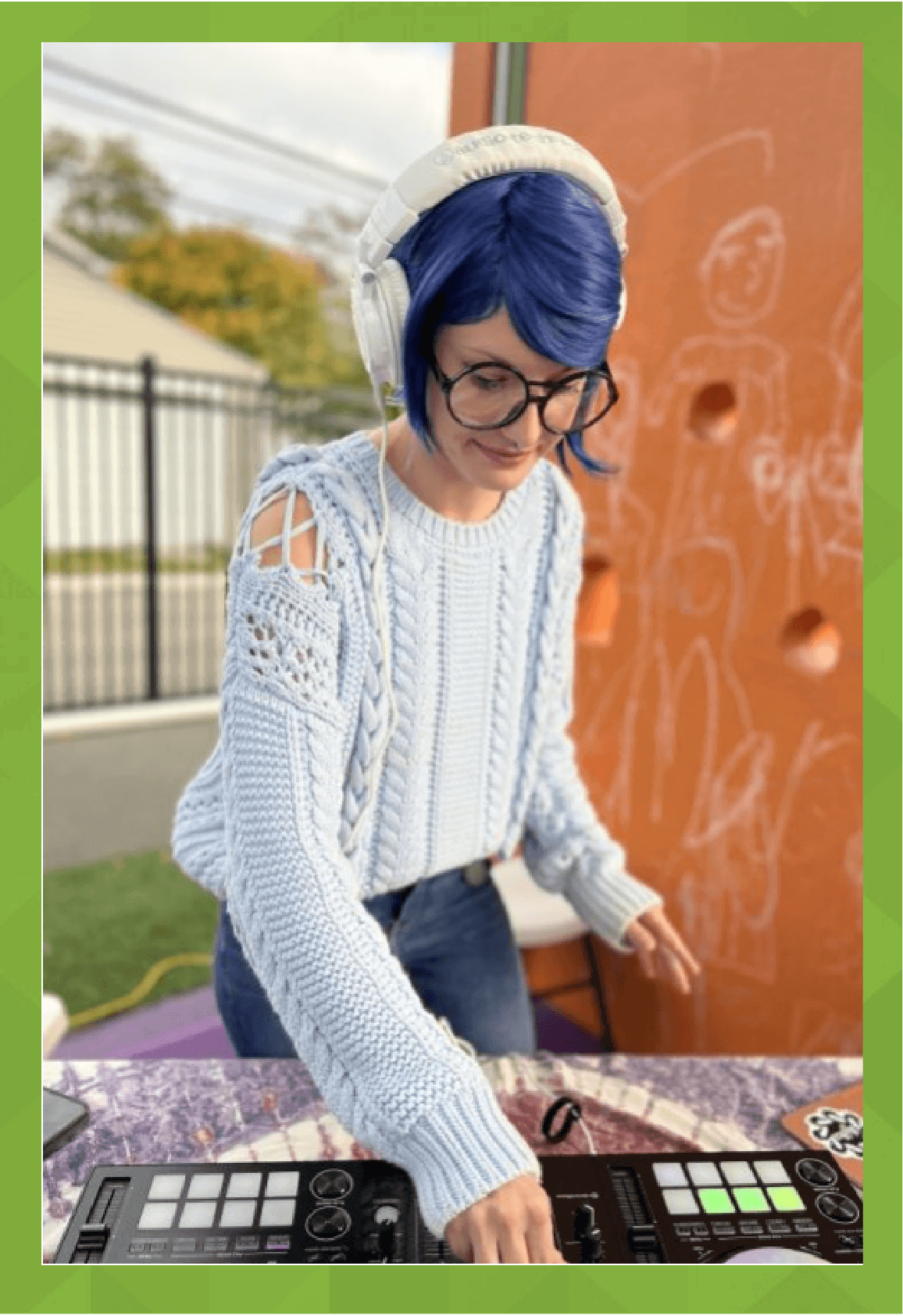
The Power of Music in Growth
Music is universal. Long before words, children respond to rhythm, melody, and sound. At LifeLab Kids, music therapy helps a child to express, communicate, and enjoy learning.
Benefits of Music Therapy
- It encourages communication, even without words.
- It creates a safe space for self-expression.
- Supports emotional balance and regulation.
- Improves focus, attention, and memory.
Music therapy can support
- Delays in speech or communication.
- Difficulty in maintaining attention.
- Emotional regulation challenges.
- Children who connect more through sound than words.

Tips for Parents
- Sing through routines: Try turning brushing teeth or cleaning up into a short song.
- Clapping games: Build rhythm and attention with simple patterns.
- Create a calm playlist: Soft music can become a tool for winding down at bedtime or after a busy day.
The LLK Newsletter – Therapist Section:
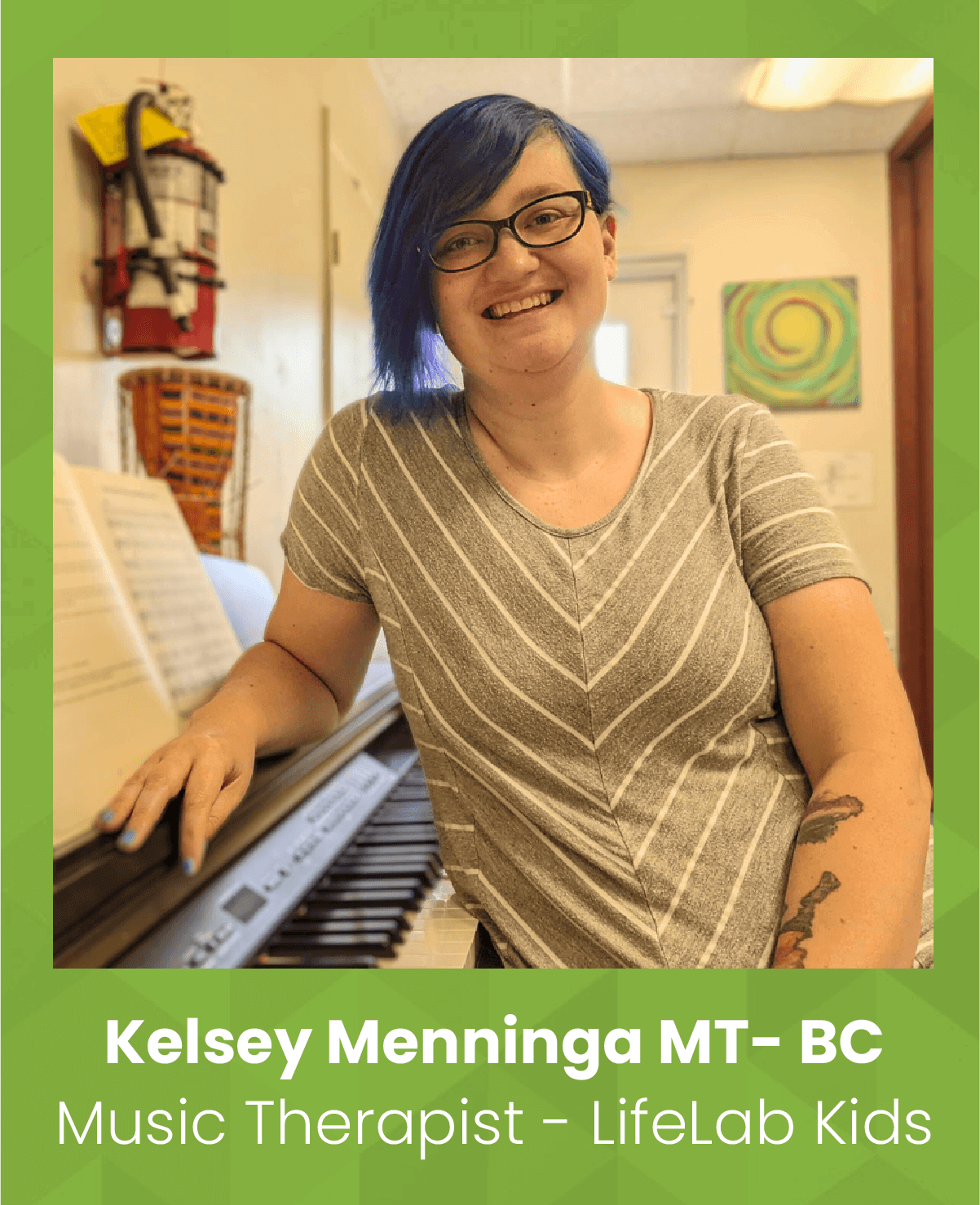
As a music therapist, I am so lucky to see how music impacts kids every day. A simple rhythm, a familiar song, or the chance to experience music with another person can transform a child’s day.
Music therapy meets each child where they are, offering a space to express themselves, explore how they are feeling, and engage with the people around them uniquely. In my time here, I’ve been able to see growth not only in music but outside of it as well. I’ve watched as the flexibility learned by listening to new music in their session leads to more flexibility in daily routines. I’ve seen kids whose self-confidence to sing along to a song results in an increase in vocal communication with family and friends.
One of my favorite parts is when the children bring back the music into their homes – suddenly, family car rides are traveling karaoke rooms! Music has such a great power to guide, comfort, and inspire growth for all of us, and I am excited to continue bringing this power to our clients at LifeLab Kids!

Inside the Session
The room is filled with sound, a soft strum of guitar, the beat of a drum, or the gentle shake of maracas. Children step in and choose how they want to join. Some start by listening quietly, others hum along, and a few jump right into the rhythm.
From a childís view, it might feel like this:
“I tap my drum and hear the echo. The therapist follows my beat, and suddenly, we’re making music together. When I want to move, we dance to the rhythm. When I feel shy, I just listen, and thatís okay too. The music always waits for me.”
Every session is flexible, playful, and shaped by each childís curiosity. There’s no right or wrong, only sound, movement, and connection.
From LifeLab Kids Community
Every Putt Made a Difference
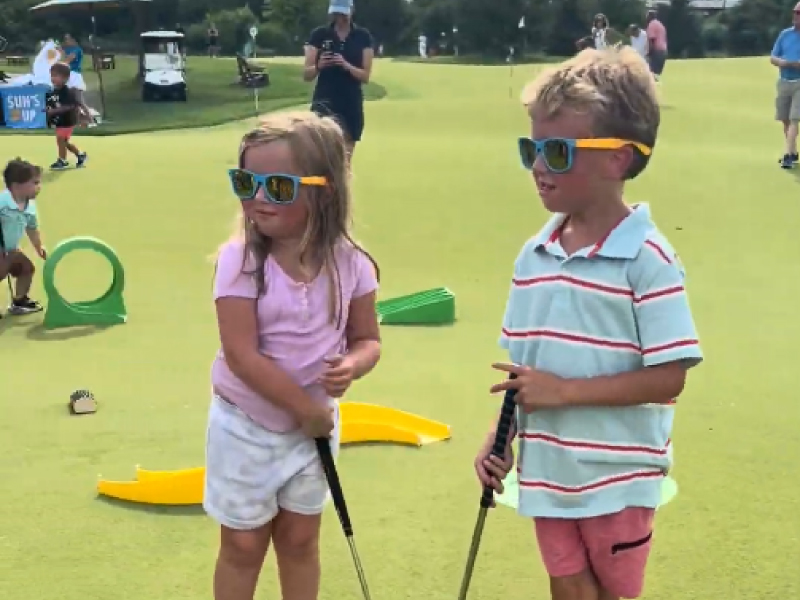
Every Putt Made a Difference
This month, our community gathered for something special, not just a game of golf, but a celebration of purpose. At Cardinal St. Johns Putting Party, the course was alive with laughter, connection, and a shared belief in creating brighter futures for kids at LifeLab.
Together, we raised $66,000, a gift that will bring more therapies, more smiles, and more moments of progress for children who deserve every chance to shine.
A heartfelt thank-you to the Pulte Family Charitable Foundation for leading this incredible act of generosity, and to every participant who made the day memorable. Your support is more than a donation, itís hope, joy, and opportunity for our kids.
Employee of the Month: Miles Grey
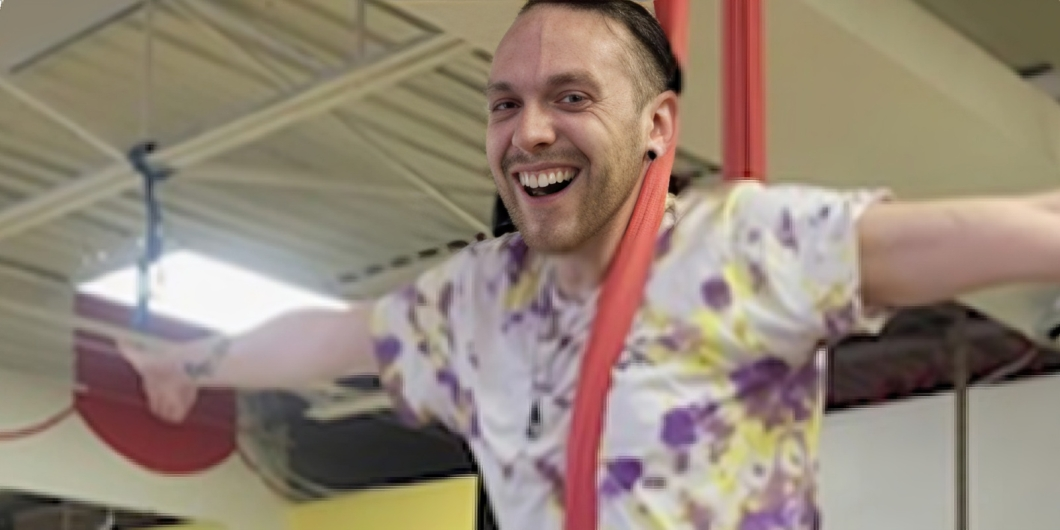
Employee of the Month: Miles Grey
We’re proud to celebrate Miles Grey as our Employee of the Month!
Miles played a key role in the success of our prevocational pilot, going above and beyond to support client progress and growth. Their energy, creativity, and commitment continue to shape therapy experiences at LifeLab Kids in powerful ways.
Parents’ FAQ

What are the challenges of autism spectrum disorder?
Autism spectrum disorder (ASD) looks different for every child, but common challenges may include:
- Communication – from limited speech to difficulty with conversation or nonverbal cues.
- Sensory sensitivities – sounds, lights, textures, or smells can feel big.
- Social interaction – making friends or joining group activities may take extra support.
- Routines & behaviors – repeating actions or needing predictability brings comfort.
- Emotions – managing frustration or big feelings can be hard without the right tools.
At the same time, autistic children often shine with strengths, creativity, strong memory, deep passions, and different ways of thinking. With the right support, those strengths can truly flourish.
What is the best way to help an autistic child understand what you mean and that there’s nothing personal in your words or actions towards them?
Clear, direct communication helps many autistic individuals feel understood.
Try these tips:
- Use simple words, avoid sarcasm.
- Gently explain your intention.
- Ask, “Does that make sense?”
- Use visuals if needed.
- Stay calm and consistent.
Every child is different, Understand and respect their style and offer reassurance.
New to parenting a non-verbal autistic child—seeking tips and insight.
Gentle, everyday ways to connect:
- Notice all communication – gestures, sounds, or looks count too.
- Try AAC tools – picture cards, boards, or speech apps with guidance from a therapist.
- Use visuals and routines – schedules, timers, or “firstñthen” boards make transitions easier.
- Following their joy – music, water play, spinning toys, or bouncing can be a bridge to connection.
Connection is about laughter, touch, and shared moments.

A Creative Way to Talk About Emotions
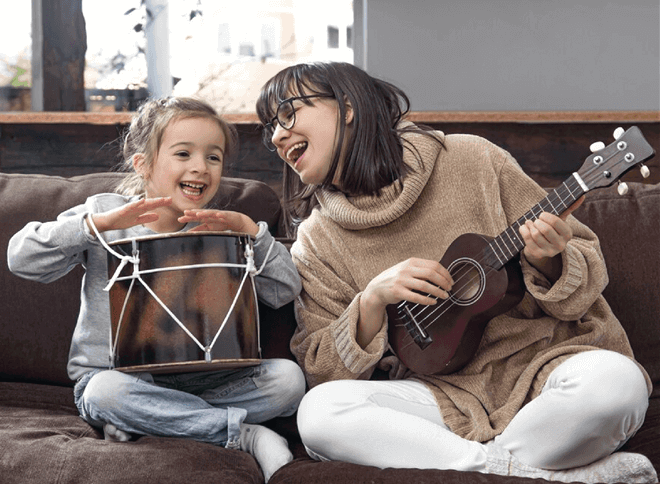
For many children, especially those who find words tricky, emotions can feel like a big mystery. Creative play, whether through color, sound, or movement, can give feelings a safe way to come out. At LifeLab Kids, our therapists often use art and music to help children recognize and share emotions, and you can try some of these simple ideas at home too.
Color My Feelings
- Sit down with crayons, markers, or paints and invite your child to “draw their feelings.” They don’t need to make a picture just swirls, lines, or shapes in different colors. You can gently ask questions like, “What color feels happy?” or “Can you show me your tired feeling?” Over time, these colors can become a language you both understand.
Music & Mood Match
- Play different kinds of music, upbeat, soft, slow, or dramatic, and encourage your child to move, dance, or choose a color card that matches the mood. You’ll notice how naturally children connect sound and movement with feelings. It’s a fun way to start talking about emotions like calm, excitement, or even anger in a non-pressuring way.
When emotions feel too big for words, an activity can become a bridge to connection. These little moments of creative play are not just activities, they’re conversation.


Thank You for Being Here
Every story of progress at LifeLab Kids is possible because of you, our families, friends, and community who believe in every child’s unique journey.
Whether you’ve joined an event, shared a kind word, or simply taken the time to read this Journal, you are part of the circle that makes growth and joy possible.
From music to art, recreation to therapy, each smile we celebrate is made brighter because we are walking this path together. Thank you for standing with us, for cheering on our kids, and for reminding us that they are never alone.






